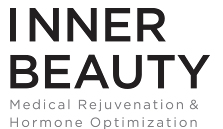What type of incontinence do I have?
Types of Incontinence
Incontinence is a real issue. Putting your finger on the kind you have is tricky. Types of incontinence vary. Changes in anatomy. Hormone changes. Stress and trauma. Prostate health. All of these factors play a part in types of incontinence. Knowing what you’re dealing with is the first step to getting the right treatment.
Let’s take a look at the 6 most common types of urinary incontinence.
Stress Incontinence
Stress incontinence is very common in women of all ages. And 25% are younger women! If you leak urine when you laugh, sneeze, cough or lift a heavy object this is Stress Incontinence. The most common causes are pregnancy and childbirth and hormone changes with age.
Incontinence is Equal Opportunity:
Stress Incontinence occurs in 25% of young women. Mixed Incontinence is very common in men.
Mixed Incontinence
If you have symptoms of both Stress Incontinence and Overactive Bladder you likely have Mixed Incontinence. Men and women are diagnosed with Mixed Incontinence. This occurs with prostate issues, wear and tear from childbirth and elderly people.
Physical therapy for pelvic floor strengthening is a very effective, nonsurgical, nonpharmaceutical way to treat Stress, Urge and Mixed Incontinence. Dr. Russo has a team of PT professionals specially trained in women’s health with holistic treatment plans.
Urge Incontinence
Urge incontinence is when the bladder contracts involuntarily, detrusor instability, Women have symptoms of sudden and uncontrollable need to urinate or use the bathroom. Patients may have many trips to the bathroom during the day and and increase in the need to urinate at night – nocturia. This often interferes with sleep. At times, women may have accidental leakage of urine with sleeping, called enuesis. Some causes include neurological disorders like Parkinson’s Disease. Other causes are medical conditions that affect nerve signaling, such as Diabetes or Multiple Sclerosis. Finally, infections and damage to the bladder or nerve endings cause Overactive Bladder.
Overflow Incontinence
Overflow Incontinence happens when something blocks the complete emptying of the bladder. This is much more common in men because it’s often related to prostate issues like enlarged prostate. In women, factors leading to Overflow Incontinence include uterus or bladder prolapse and childbirth.
Functional Incontinence
For men and women with dementia or mental illness Functional Incontinence is common. When you’re urinary system is functioning normally but you still can’t stay dry all the time, you probably have Functional Incontinence.
Reflex Incontinence
Reflex Incontinence occurs in people with serious neurological damage like spinal cord or brain injury. Reflex Incontinence happens when urine leaks, often in large amounts, without any warning. Because of the large amounts of urine that leak and the condition of many of those diagnosed it’s important to be aware of maintaining skin integrity especially in the diabetic person.
Treatments for Types of Urinary Incontinence
By now you’ve noticed many causes for types of incontinence are the same. Pregnancy. Childbirth. Aging. Medical Conditions. In men, prostate health. Because of this, there are 3 treatments that are worth exploring to treat incontinence in many forms.
BioTE® Bio-identical Hormone Replacement Therapy (BHRT)
For women and men, BioTE® is an effective option to replenish important hormones. Why is hormone harmony important to a healthy urinary system? Even though estrogen is known as the female hormone it plays a part in men, too. For urinary health, estrogen supports muscle tone and tissue integrity. Aging brings about that dip in estrogen which leads to laxity and poor muscle tone. So for men and women getting estrogen supplies back on track is vital. With that, testosterone and progesterone complete the triad of important hormones we all need in the right amounts in all ages and stages of life. BioTE® is plant-based so even for cancer survivors or those with prostate health concerns, it’s a safe bet.
O-Shot™
O-Shot™ uses Platelet Rich Plasma Therapy (PRP) to naturally stimulate cell regeneration and boost blood flow. Although the O stands for orgasm (which it’s highly effective for!), O-Shot™ is widely used in women for Stress Incontinence. O-Shot™ is a no downtime solution backed by science.
diVa®
diVa® vaginal rejuvenation relieves Stress Incontinence through HFL technology to resurface the vaginal walls and increase tissue and muscle integrity. diVa® is a no downtime, non surgical solution to Stress Incontinence.
Consult with Dr. Russo at Inner Beauty today for an accurate diagnosis then explore your options to resolve your incontinence for good.

